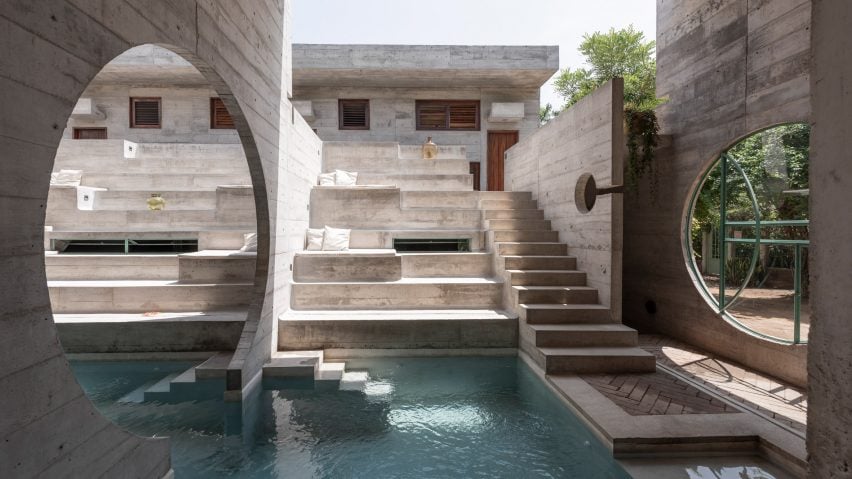
Brutalism is "very simple and honest architecture" says Ludwig Godefroy
French architect Ludwig Godefroy discusses how working in Mexico has helped him to develop his concrete-heavy style in this exclusive interview.
Hailing from Normandy in northern France, Godefroy opened his eponymous studio in Mexico City in 2011 and has since become known for his distinctive brutalist-style buildings that are often punctuated by geometric openings and passageways.
"Now I don't even know how to do architecture in France because it's been almost 20 years since I left my country," he told Dezeen. "I would consider myself much more of a Mexican architect now."
"It's given me a lot of freedom, because in France they would consider me as the Mexican and in Mexico they're considering me as the French," he added. "And I'm like, 'Well, consider whatever you want.' I'm in between, so I don't have to belong anymore."
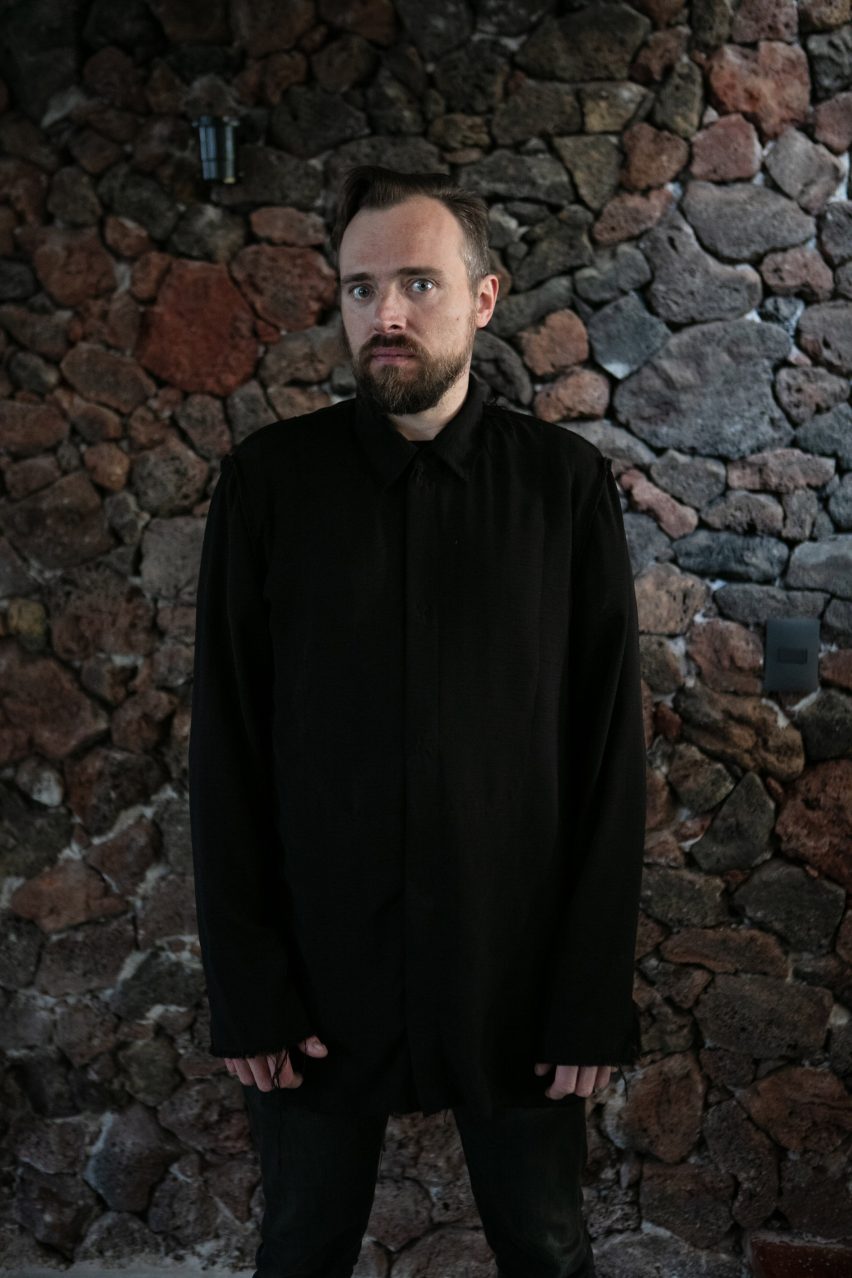
Godefroy traces his affinity for brutalism back to a youth spent playing in abandoned second world war bunkers in the small fishing village where he grew up.
"I got very into brutalist [architecture] because of my sensibility for concrete, because of my childhood – those bunkers," he said.
His interest in the style was further cemented by studying the work of highly influential Swiss-French modernist Le Corbusier, who was a major focus of the curriculum during his architecture courses in Paris.
"I really like the fact that it's a very simple and honest architecture, without finishing," Godefroy said.
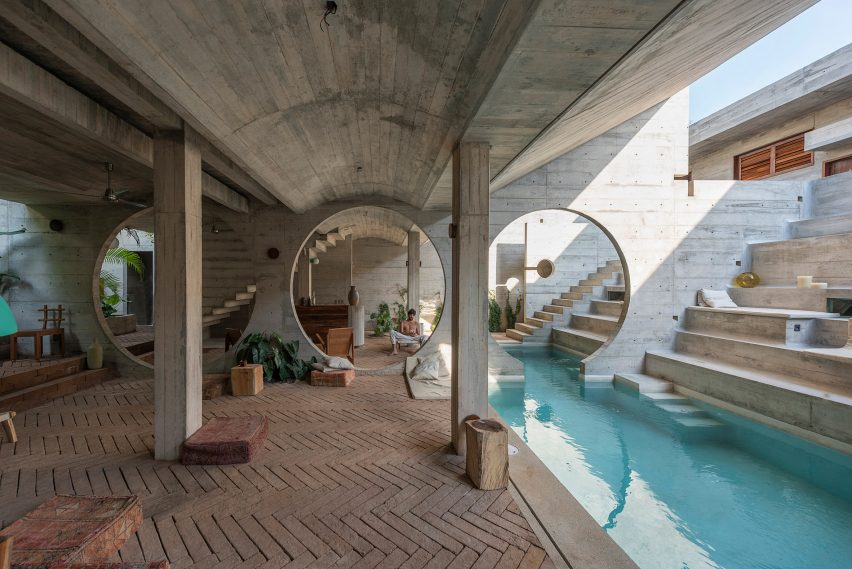
He explained that his projects, such as the Casa TO hotel in surf town Puerto Escondido, often reference the cavernous language of both bunkers and pyramids – a throughline he discovered between his birth country France and his new home in Mexico.
Having worked for studios in New York, Barcelona and Rotterdam, he settled in Mexico City in 2006.
"I wanted to live in a big city and I wanted to learn Spanish," he recalled.
Upon moving to Mexico, Godefroy became fascinated by the temples and pyramids of pre-Hispanic architecture found throughout the country.
"Finally, I could find a bridge between my two countries"
"I never saw pyramids before arriving in Mexico," he said. "I find very similar the bunkers of Normandy and the pyramids and temples of pre-Hispanic architecture that you find in Mexico."
"And it started to make sense to me. Finally, I could find a bridge between my two countries."
Mexico's warm climate further allowed him to explore the brutalist style and experiment with cutaways and voids.
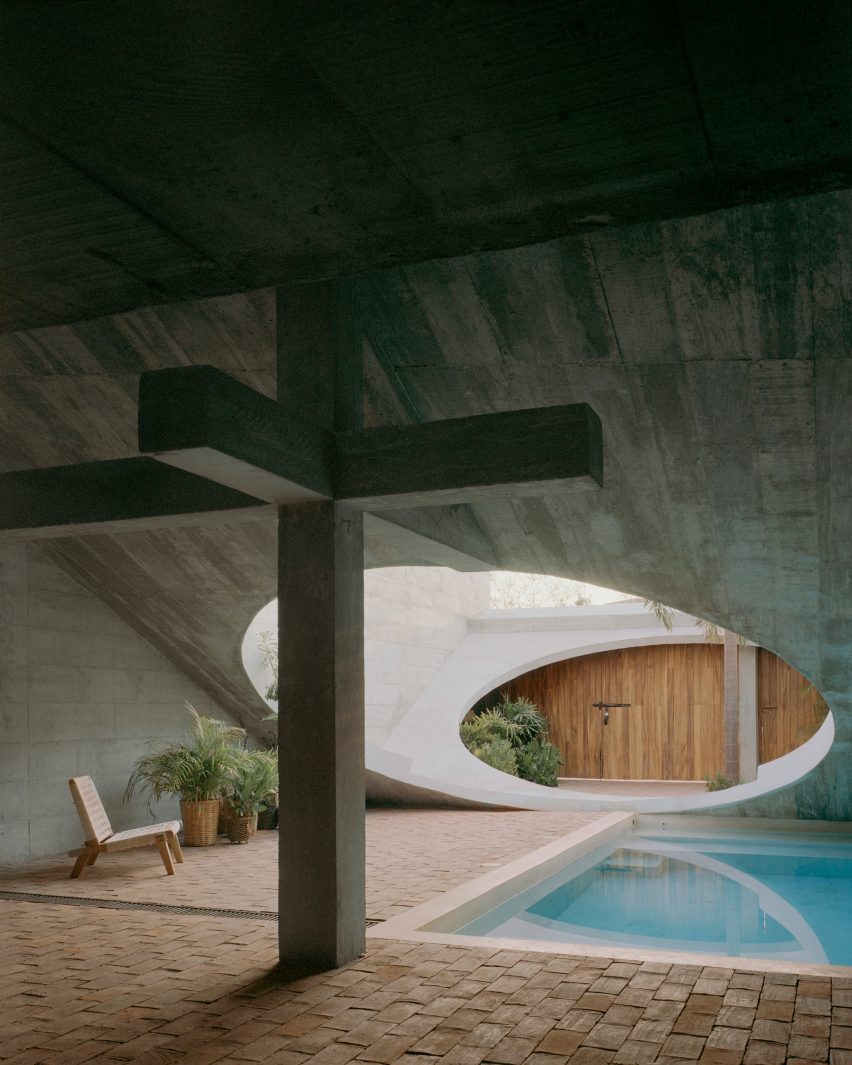
"I discovered new opportunities in architecture, something that you could not do in France, because we have a very strong winter so you have to protect yourself from the cold," he said. "You cannot imagine an open house. Totally impossible."
"When I discovered all of this, it was like, 'Oh, that's exactly what I want to do in my life.'"
Now, Godefroy says he is keen to continue honing his particular version of contemporary brutalism.
"You have to choose at some point: do you want to be this kind of architect doing a little bit of everything – do a project made out of wood, made out of stone, aluminium and concrete depending on what you want to do at this precise moment?"
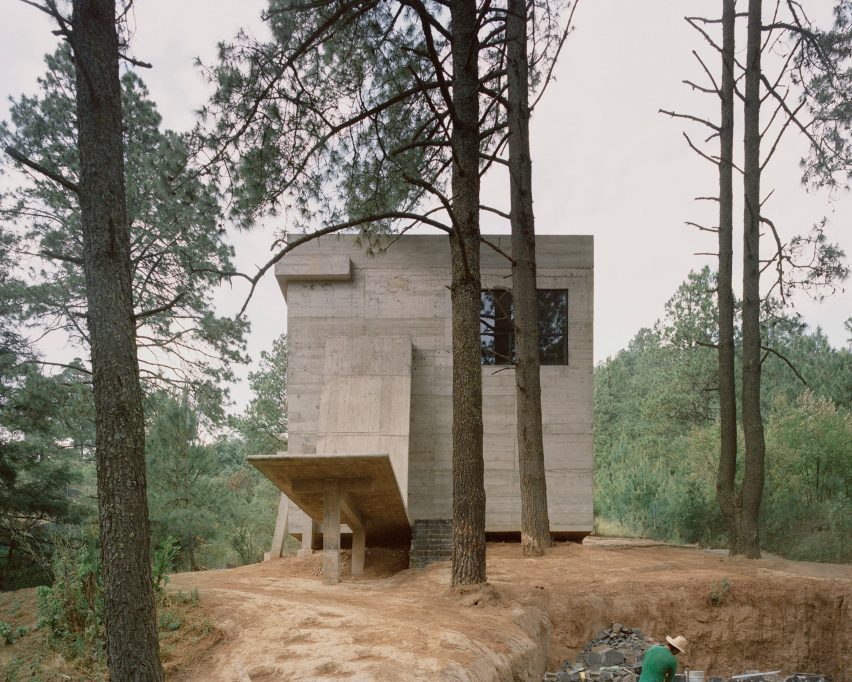
"Or do you want to follow a line and try to develop this, and try to get your architecture more mature from one project to another, try to get deeper into your style?"
"I think I'm trying to do this, I have to confess. But at the same time, you never know."
He believes that growing up in a fishing village has also influenced his own particular style and its close ties to the "honesty" of brutalism.
"I'm sure that something which is important is that I'm coming from a fisherman village," he said. "What I've learned from fishermen: they're very simple people. When they do something, it has to have a meaning. It's always very simple and very honest."
"This is why I like to integrate vernacular details in my architecture, because I'm coming from this culture of being simple. It's like when you are born in a small village, you do not pretend to be someone else."
Godefroy, who works primarily with concrete and wood, said that working in the Mexican countryside, in places like the Alférez region and Zicatela Beach, has informed his choice of materials as it keeps construction simple for local workers.
"I prefer to work in the countryside. I want the local workers. If I work in Oaxaca, I want the workers to be from Oaxaca; if I work in the Yucatán, I want them to be from Yucatán. I have to keep it simple because they are just like regular workers, they're not specialised workers."
"I got rid of what I started to consider unnecessary," he explained. "That's why I didn’t want to work any more with leather – if you're in a village and ask a worker to do leather on the wall, they would not know how to do it, the same with copper."
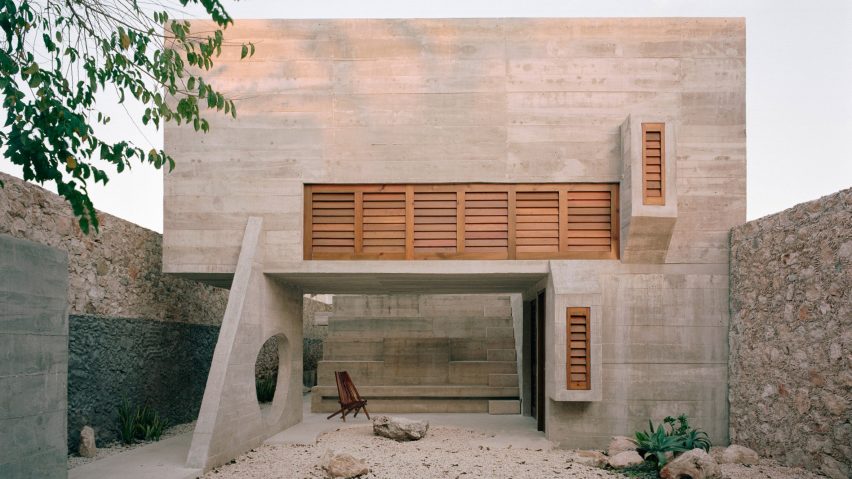
Godefroy explained that working with concrete provides "freedom" on-site, allowing him to adjust the final 20 per cent of a design as he and his team build.
"You have this opportunity in Mexico that we still have a very good balance between the price of the materials and the price of the labourers," he said.
"We don't have to work in everything prefabricated and shorten as much as possible time on the construction site."
"When you open this door, then you also open the possibility to work with a lot of stonework, to work on-site, to make more structural architecture."
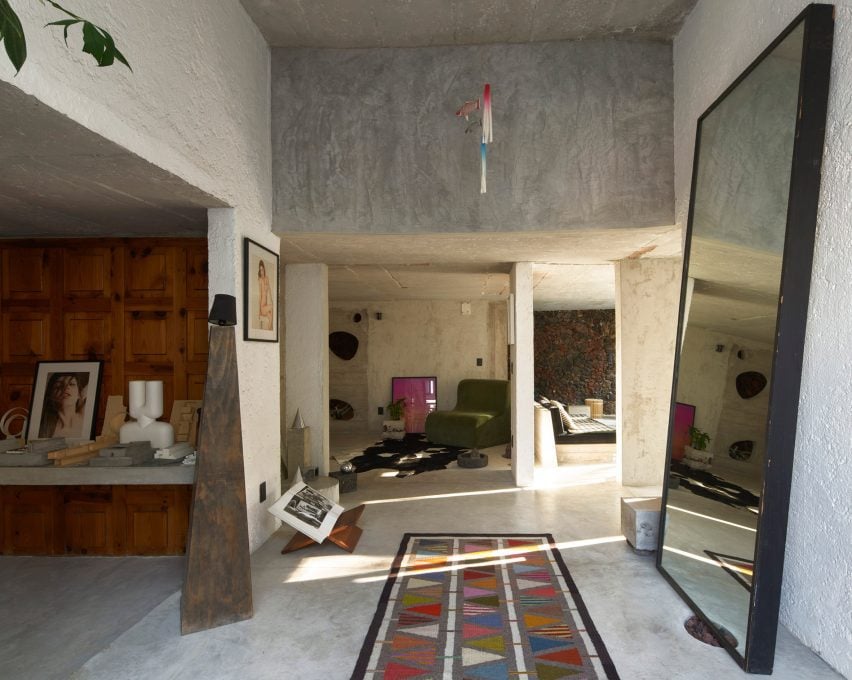
For Godefroy, buildings having a sculptural quality is highly important.
"This is something I really like – the fact that architecture is sculptural, architecture is playing with light and shadow," he said.
"Architecture is playing with emotion. For me, architecture is not about resolving a floor plan – a real-estate builder can do that as good as an architect."
"The only thing a real-estate builder normally is not doing as good as an architect is putting emotion inside of a building."
"Obviously, when we talk about sustainability, concrete has a very bad reputation"
Godefroy addressed the criticism concrete receives as a material, which contributes up to 8 per cent of total global CO2 emissions, making it the most polluting building material worldwide.
He claimed that using wood has a similar environmental impact, especially as it relates to tree harvesting practices around the world.
"Obviously, when we talk about sustainability, concrete has a very bad reputation," said Godefroy. "We all think that it's a very dirty material. And everybody would think wood is the best. I don't think it's a good material and it's not sustainable – it's the same."
"The way we produce wood now is in a very industrial way. In Mexico, for example, they're cutting trees in an illegal way, which means they don't have any management. This is also something that would happen in countries like Brazil and Indonesia. The tropical woods, they're coming from those countries where it's impossible to really trace and control the origin of the wood."
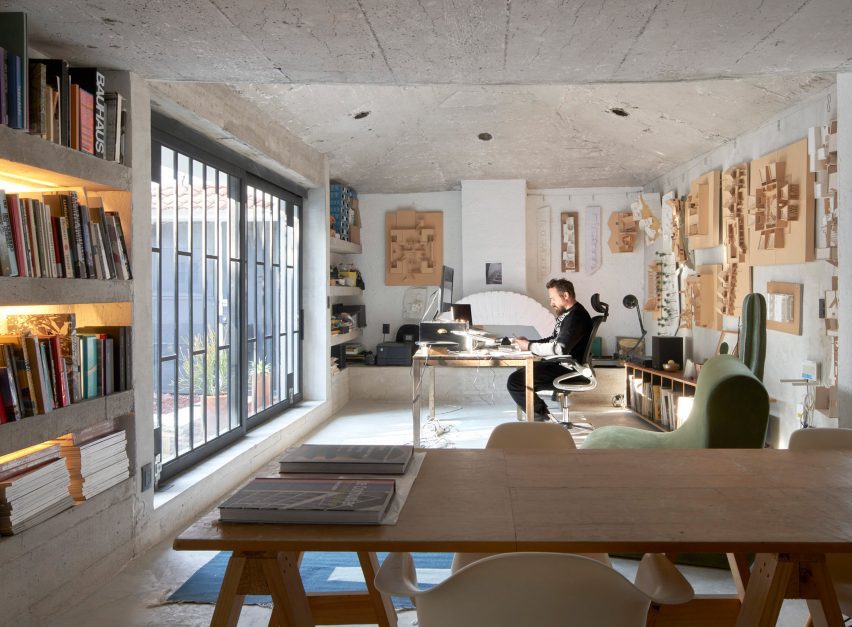
He also believes concrete is more durable over time as opposed to wood, and requires less maintenance.
"Concrete has a very long life with a very low maintenance," he added. "Yes, the very first day on the table, if you compare me to another kind of construction, concrete would be the dirtiest one. But then after 30 years – low maintenance. The fact that I'm not using chemicals every year to protect my concrete, then in 30 years, we should talk again."
Ultimately, the architect believes earth is the only true sustainable material.
"I think the only way to be sustainable is to take the material from the ground, on your land," he said. "So I would say probably the only sustainable material is earth, if you have it."
Dezeen In Depth
If you enjoy reading Dezeen's interviews, opinions and features, subscribe to Dezeen In Depth. Sent on the last Friday of each month, this newsletter provides a single place to read about the design and architecture stories behind the headlines.